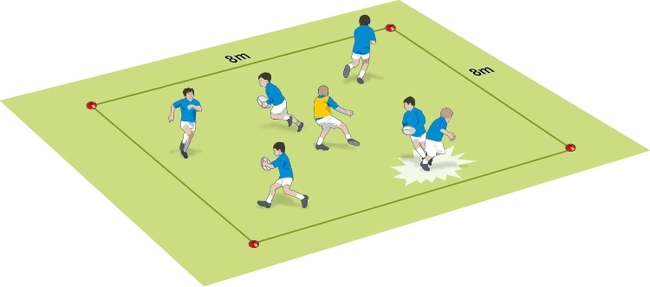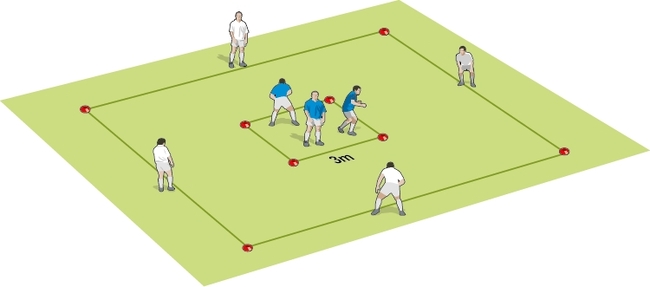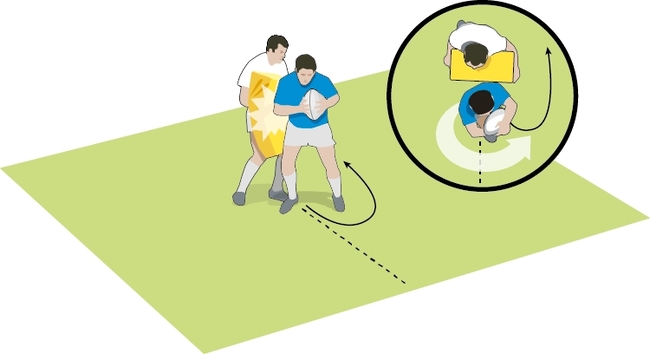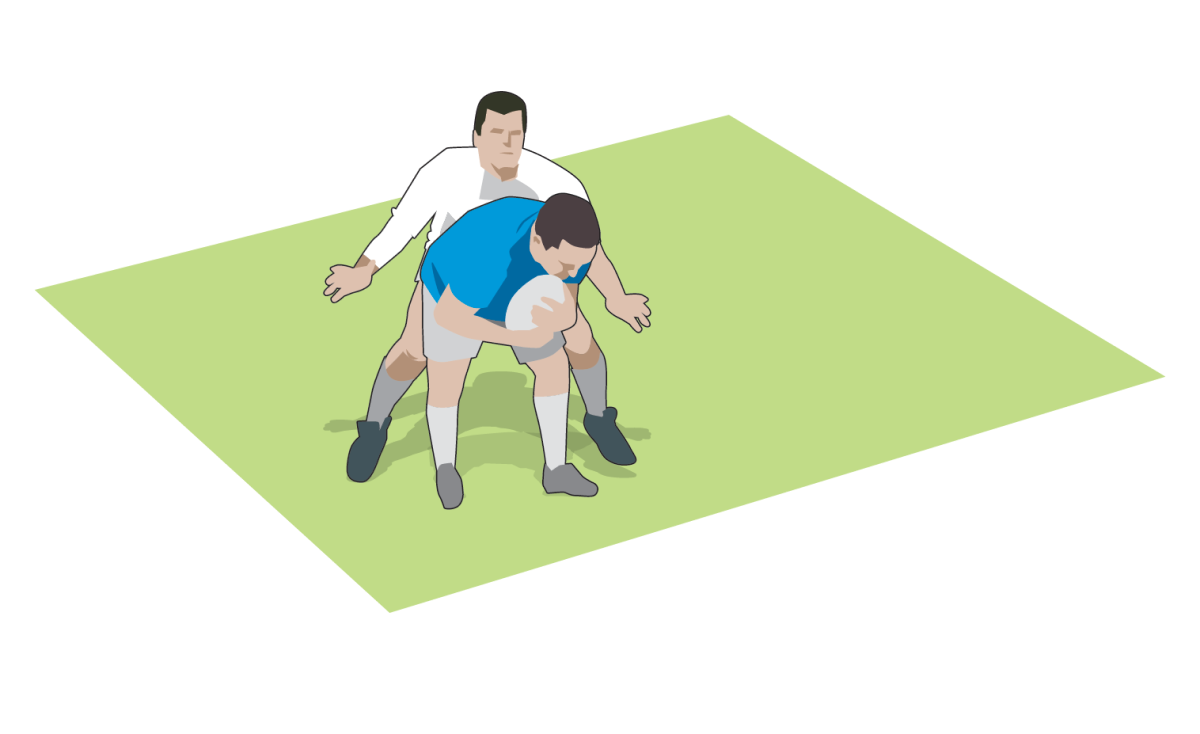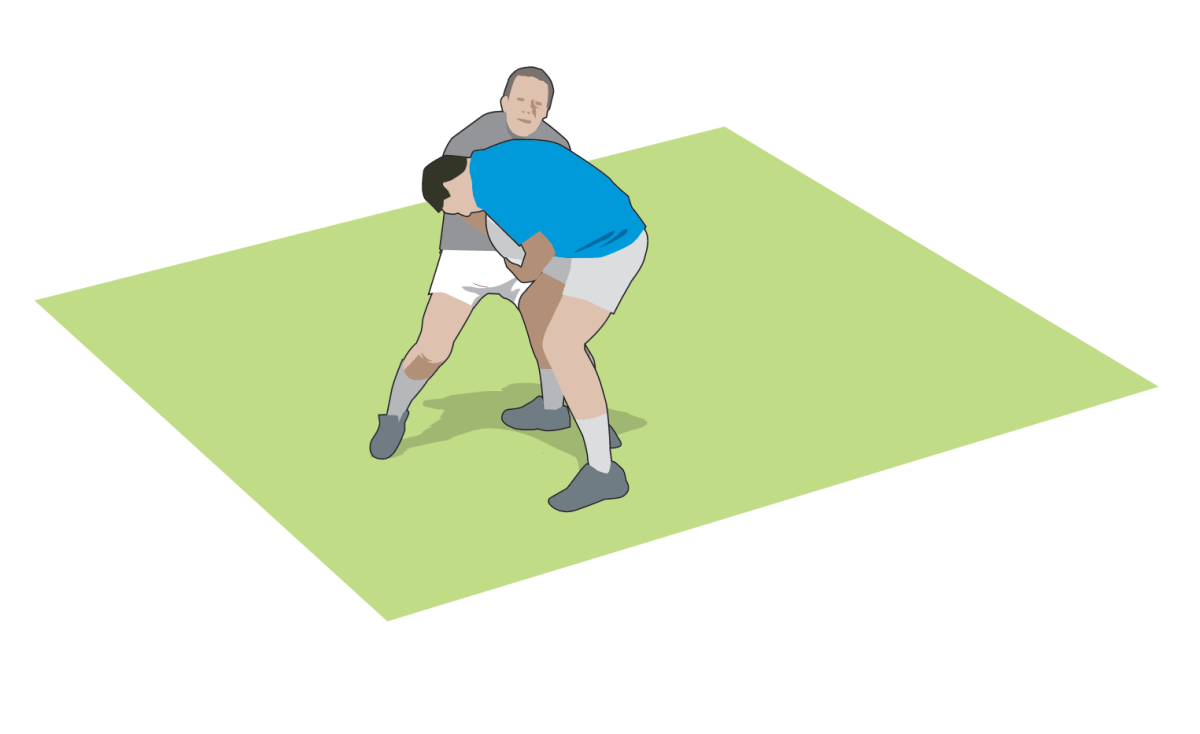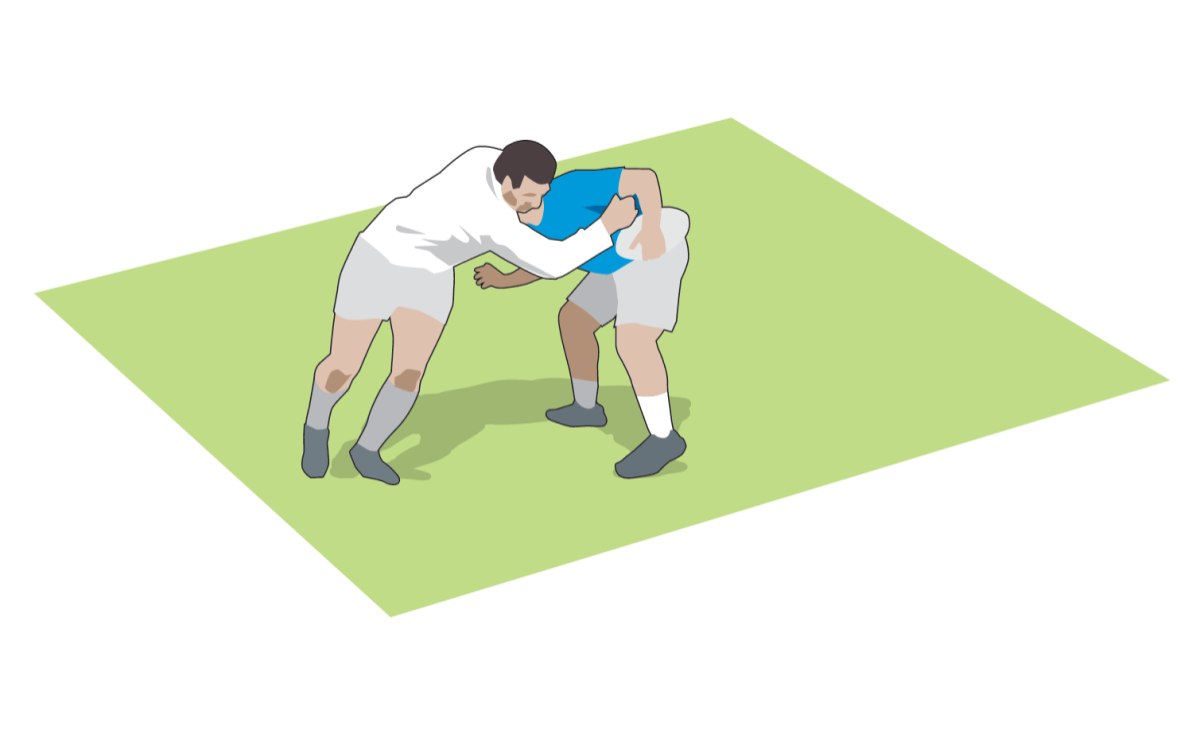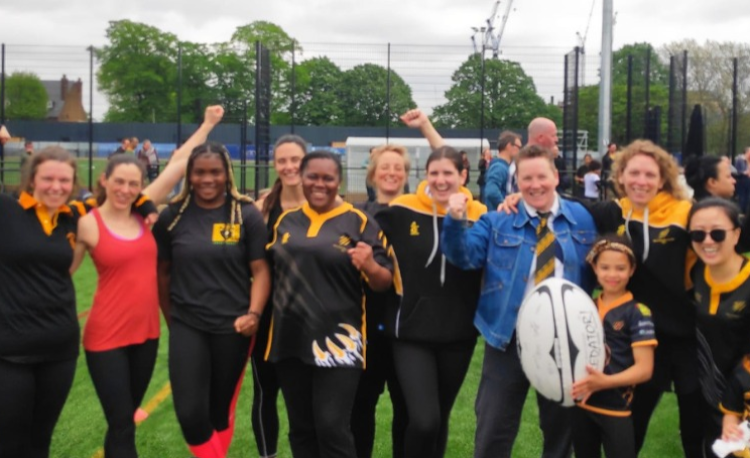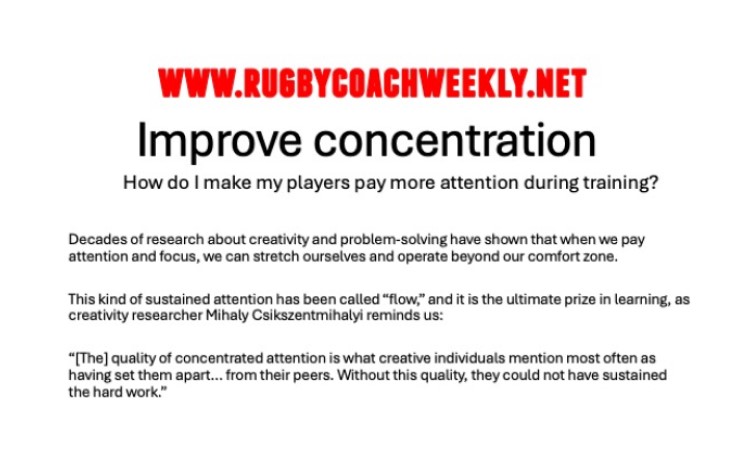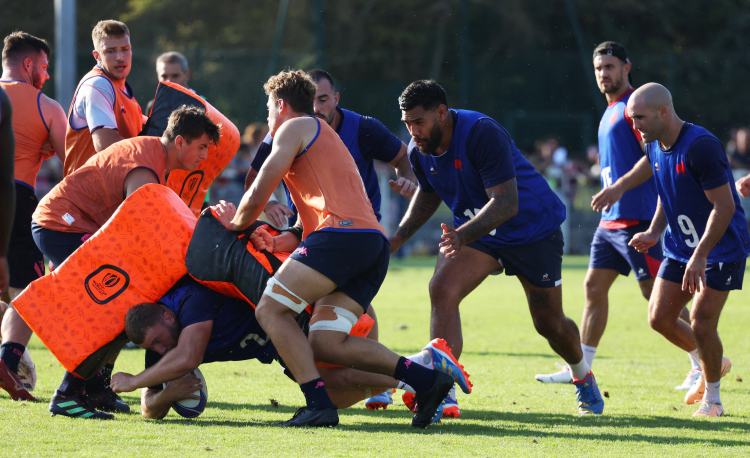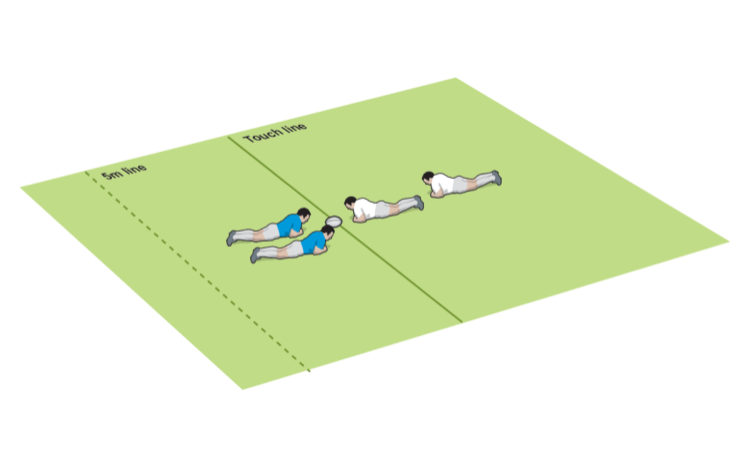You are viewing
1 of your 2 free articles
Hip, twist or turn?
These are the three main options the ball carrier has when taking the ball into contact. Help players decide which is the best choice to make.
Though we want the ball carrier to avoid contact, there will be times when they will be tackled and still able to adjust to take the impact on their own terms.
There are some principles for this contact, but not every circumstance suits just one type of body position.
There are three main types of body position:
- The full turn, so the back is into the opposition.
- The twist and step, when the chest is facing the touchline.
- The ball on the hip, when the chest is down the pitch.
Before we can assess each one, we need to prioritise the outcomes that we want.
- Ball retention: Which option makes sure we keep the ball safe and secure?
- Speed of continuity: We want to make sure we can win the ball back quickly enough to stress the defence.
- Go forward: If we can’t win the ball back quickly, can we still go forward?
Training tips
- Use more player v player contests rather than player v pads.
- Mix and match the sizes. Players might have to change their style to suit the situation.
- Create different scenarios where there may be more defenders or more supporting players. These players might join the situation at different times.
TURNING WITH THE BALL
As contact is made, the player turns and presents their back to the opponent, and presents the ball two-handed towards their own goal line.
Pros
- Places their whole body between the defender and the ball creating a large block
- Has maximum grasp and protection of the ball
- Can see who they are handing the ball off to
Cons
- Has no effective forward drive
- Can easily be tackled to the ground if support is not immediate
- Risks being hit around the kidneys which is painful, even dangerous
THE TWIST AND STEP
Just before contact, the ball carrier turns and steps into the contact, with the ball on the hip of the back leg.
Related Files
Pros
- Powerful contact with the opposition
- Difficult to bring the ball carrier to ground because of the wide stance
- The ball is away from the opposition
- If the defender is rocked back, can turn either forward to drive forward or turn back to hand the ball off
Cons
- Stops any further momentum
- Limits the passing/continuity options
Ball on hip
As contact is made the player faces forwards and places the ball on the hip furthest from the defender.
Pros
- The player can keep driving forwards
- Less easy to tackle to ground
- Moves the ball away from defender
Cons
- Only controlled by one hand
- No vision of who is taking ball
- Exposes ball on one side to defenders if support is not immediate
Newsletter Sign Up
Coaches Testimonials

Gerald Kearney, Downtown Las Vegas Soccer Club

Paul Butler, Florida, USA

Rick Shields, Springboro, USA

Tony Green, Pierrefonds Titans, Quebec, Canada
Subscribe Today
Be a more effective, more successful rugby coach
In a recent survey 89% of subscribers said Rugby Coach Weekly makes them more confident, 91% said Rugby Coach Weekly makes them a more effective coach and 93% said Rugby Coach Weekly makes them more inspired.
Get Weekly Inspiration
All the latest techniques and approaches
Rugby Coach Weekly offers proven and easy to use rugby drills, coaching sessions, practice plans, small-sided games, warm-ups, training tips and advice.
We've been at the cutting edge of rugby coaching since we launched in 2005, creating resources for the grassroots youth coach, following best practice from around the world and insights from the professional game.
